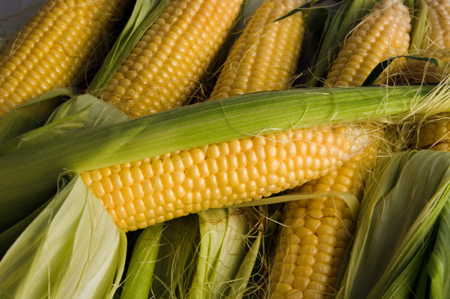Column: Crop Watch – North Dakota Corn Still Stands, and it is in Tough Shape
Category: Grains

(Reuters) – Harvest wrapped for the U.S. Crop Watch corn and soybean fields more than a month ago with just one exception: the corn in North Dakota. And that field is likely to remain untouched for at least a couple more months, if it is harvested at all.
The North Dakota producer, located in the east-central area of the state, planted 1,000 corn acres this spring, but he has been unable to harvest any of it due to excessive moisture that has lingered since late summer. He estimates that only 30% of corn fields in his area, at the very most, have been harvested.
The 250-acre Crop Watch corn field, which was planted on time on May 17, is extremely wet and the test weight is terrible. A check about two weeks ago showed moisture around 39% and test weight at 42.6 pounds (19.3 kg) per bushel. That test weight is about the lowest in the area, as most fields are between 44 and 50 pounds.
Typically, east-central North Dakota corn comes in between 52 and 56 pounds per bushel depending on the yield. In the United States, No. 1 yellow corn must be at least 56 pounds and No. 2 corn 54 pounds, and growers are docked when they sell corn with low test weights.
It is common for corn in east-central North Dakota to be around 20% moisture at harvest. But given the current moisture, the costs to harvest and dry the corn make doing so unprofitable, especially considering the discounts incurred due to test weight. That is why the Crop Watch grower and other area farmers are holding off on harvest.
Test weight typically improves as moisture declines, but local producers are unsure how much it will rise since a lot of corn may not have reached black layer, the final stage in maturity. Data from the U.S. Department of Agriculture suggested that 95% of North Dakota corn had matured by Nov. 3.
Some producers in east-central North Dakota are skeptical of that number, so they are either among the few unlucky ones, or USDA may have overstated maturity. The Crop Watch grower had only one corn field reach black layer.
The Crop Watch corn field could be harvested as early as late February or early March and as late as June, and possibly not at all. Whether it gets combined or destroyed largely depends on what insurance adjustors offer.
The producer hopes to harvest most of his corn, but the Crop Watch field is in a very poor state relative to the others. An insurance payment to destroy the Crop Watch corn may not meet his cost of production, but if he is forced to harvest it, the financial loss would be much greater due to quality discounts and storage considerations.
On average over the last five years, North Dakota grew 3% of the national corn crop. It produced a larger share of soybeans at 5%.
CORN STILL STANDING
The North Dakota Crop Watch grower has never left corn in the field until the spring in his seven years farming on his own, but other growers he works with in the area who have been around much longer have never seen this much corn left in the field.
USDA data supports that claim. As of Sunday, only 43% of North Dakota corn was reported as harvested. There is no five-year average by which to compare, but the progress was 36% a week earlier against an average of 95%.
That is by far the most unharvested corn in North Dakota in records since 2000. The next-closest year is 2009, when harvest was 53% done on Dec. 6. Some 68% was harvested by Dec. 20, and that was the last report of the year. USDA will not issue another Crop Progress report this year, so 43% is the last number.
Even though much of the 2019 corn is still in the fields, North Dakota growers are already thinking ahead to the 2020 season. The Crop Watch producer planted 1,000 corn and 750 soybean acres in 2019, and as of today he expects to flip those numbers in 2020. The futures price is currently more favorable for soybeans than corn, and the extremely high soil moisture levels, if they continue into spring, are not conducive to planting corn or small grains.
Crop Watch 2019 followed one corn and one soybean field in eight major U.S. Corn Belt States on a weekly basis from planting through harvest. Each week, the producers evaluated yield potential on a scale from 1 to 5. A score of 3 is near farm average, a 4 is above the recent field average by about 5% to 10%, and 5 is even better, potentially a record or near-record yield. (tmsnrt.rs/2Waikwk)
The final, unweighted eight-field yield average for soybeans was 3.22 versus 4.06 last year. The corn score is 3.25 versus 3.94 last year. Despite issues with test weight, the North Dakota producer has left his corn yield score at 2 because he believes the bushels may be there. Any change would most likely be to the downside.




